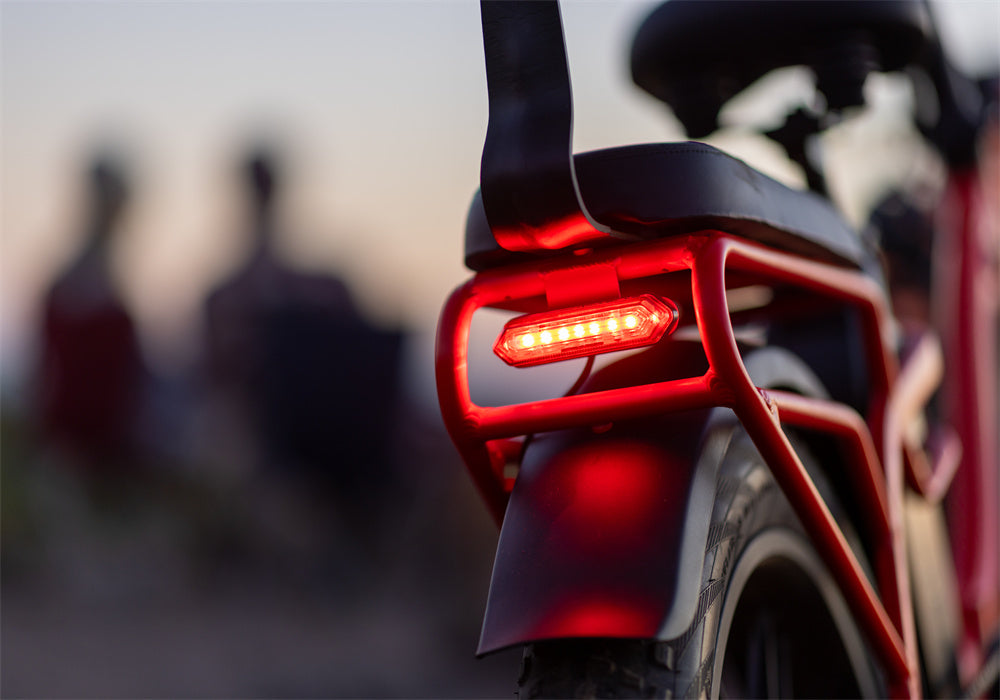E-Bike Motors
E-bike motors are the heart of electric bicycles, converting electrical energy into mechanical energy to assist in pedaling. The wattage rating of an e-bike motor, such as 250 watts (W) or 500 watts (W), is a key indicator of the motor’s power output.
250W Motors
- Compliance with Regulations: In many regions, a 250W motor is the maximum power allowable for an e-bike to still be classified as a bicycle without the need for a license. This makes 250W e-bikes widely accessible.
- Sufficient Power for Basic Needs: Ideal for flat terrains and moderate speeds, 250W motors offer enough power for daily commutes and leisurely rides.
- Energy Efficiency:These motors are more energy-efficient, often resulting in longer battery life per charge.

500W Motors
- Enhanced Power and Speed: A 500W motor provides more torque, facilitating better performance on hilly terrains and faster acceleration.
- Increased Towing Capacity: Suitable for pulling cargo trailers or supporting heavier riders without significant loss in performance.
- Reduced Range: Due to higher power consumption, 500W motors may lead to quicker battery depletion, depending on the battery capacity and usage.

250W vs. 500W Motors
When comparing the performance of 250W and 500W e-bike motors, several factors come into play, such as speed, torque, and battery life. Each motor type serves different rider needs and preferences.
Speed and Acceleration
- 250W Motors: Typically, these motors cap the speed to about 15 to 20 miles per hour (mph), which suits urban cycling and complies with most local e-bike laws.
- 500W Motors: These can reach speeds of up to 20 to 28 mph, offering a significant boost, especially for those looking to shorten their commute time. Just like TESWAY S5 pro, with 500w motor, which could reach speeds of up to 28 mph.
Torque and Climbing Ability
- 250W Motors: They perform well on flat surfaces but may struggle on steep inclines or with heavy loads.
- 500W Motors: The higher torque output makes them ideal for climbing hills and riding on varied terrains.
Battery Consumption and Efficiency
- 250W Motors: Generally more battery-efficient, allowing for longer rides on a single charge, depending on the battery’s capacity.
- 500W Motors: While offering more power, they consume battery faster, which may require more frequent recharges or a larger battery capacity.

Choosing Between 250W and 500W Motors: What's Best for You?
You might think a 250W ebike is less expensive? However, for the cost of a 250W ebike, you could potentially get one with a 500W motor.
Considerations for 250W Motors
- Ideal for Casual Riders: Those who use their e-bike for leisure rides or mild commutes will find this motor sufficient.
- Compliance and Accessibility: Best for riders who need to adhere to strict e-bike regulations.
Considerations for 500W Motors
- Preferred by Power Users: If you face hilly terrains or need a bike that can handle heavier loads, this motor type is preferable.
- Speed Enthusiasts: Those who desire faster speeds will benefit from the extra power that a 500W motor offers.

Choose Power: Opt for a 500W E-Bike
Relative to a 250W motor, a 500W motor e-bike emerges as the superior choice for many individuals, particularly for those who prioritize power and versatility in their riding experience.
The enhanced power of a 500W motor significantly improves acceleration and hill-climbing capabilities. This is crucial for riders who frequently encounter varied terrains or live in hilly areas. The extra power ensures that the e-bike can maintain a consistent speed, even on inclines, without requiring excessive physical exertion from the rider.

The robust nature of 500W motors equips them better for longer journeys and heavier loads. Individuals who use their e-bikes for commuting with backpacks, groceries, or other cargo will find the 500W motor more capable of handling the additional weight without a significant loss in performance or speed.
Additionally, the 500W motor offers an extended range of use cases beyond mere commuting. It opens up possibilities for recreational use such as trail riding or touring, where the terrain can be unpredictable and more demanding. The power output of 500W is adept at providing a smooth and sustained ride, which is essential for these more rigorous activities. Riders looking for an e-bike that can double as a leisure and utility vehicle will find the 500W motor to be particularly advantageous.

A fat tire ebike like the TESWAY S5 Pro is ideally suited for a 500 watt motor, and it's available for just $999.99. What's even more impressive is that this e-bike is foldable, making it incredibly convenient for transportation. Its fat tires enhance stability, and the exclusive accessories from TESWAY expand the loading space of the S5 Pro, adding to its practicality and versatility
FAQs
Can I upgrade my 250W e-bike to a 500W motor?
Yes, it's possible to upgrade from a 250W to a 500W motor, but it involves not just replacing the motor but also ensuring the frame, brakes, and battery can handle the increased power.
Are 500W motors illegal on city roads?
The legality of 500W motors on city roads varies by location. It's essential to check local e-bike laws and regulations.
Do I need a special license to ride a 500W e-bike?
In many regions, a higher-powered e-bike such as one with a 500W motor may require a driver's license or at least a specific type of registration. Always confirm with local authorities.







Share:
How Heavy Are Electric Bikes
Suspension Makes for Smooth Ebike Riding